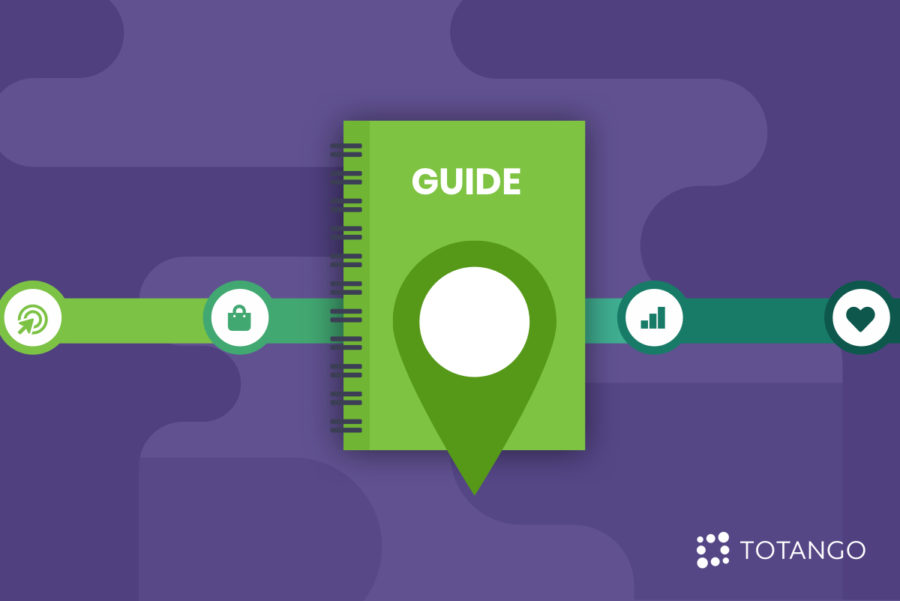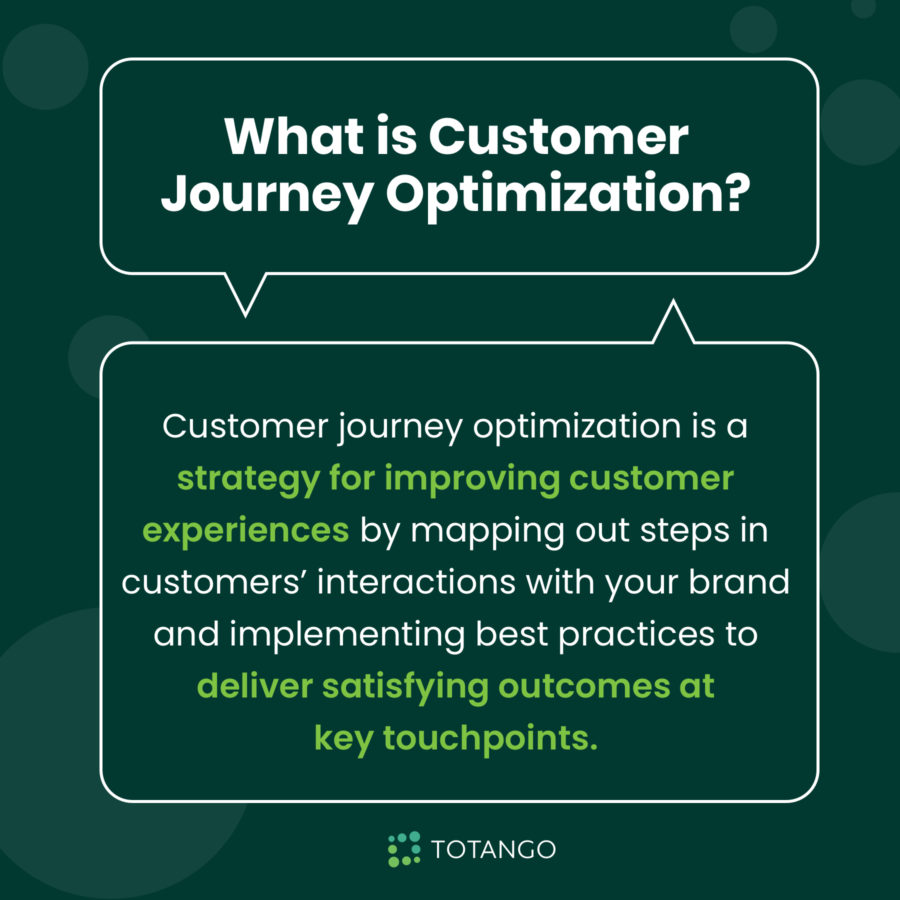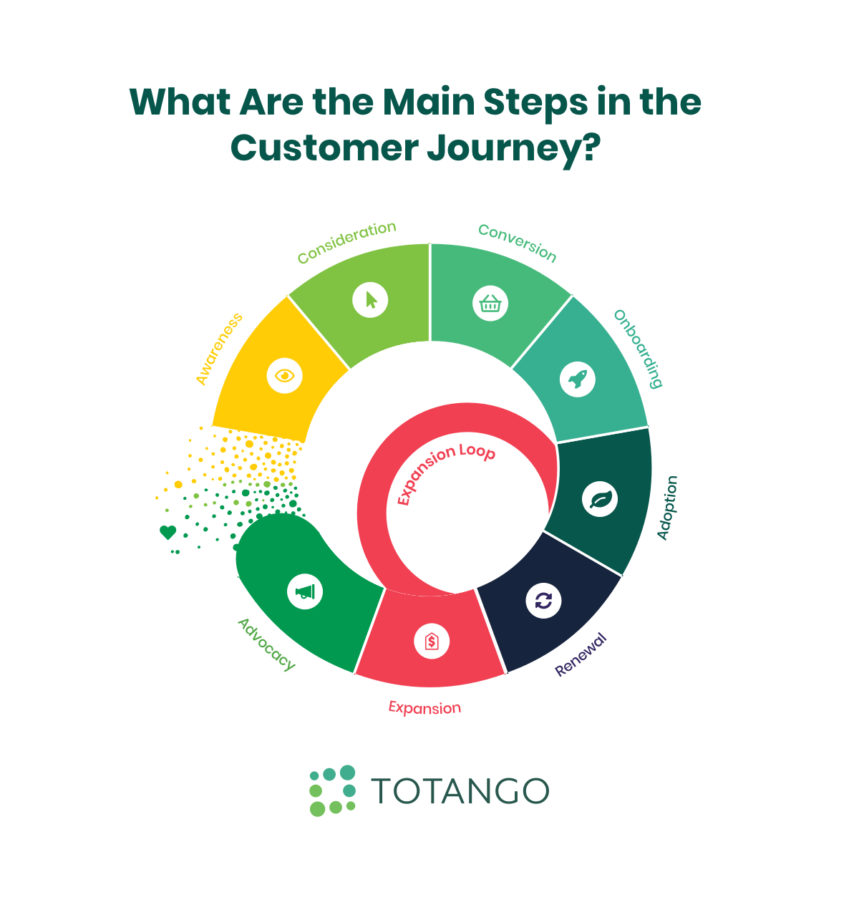Customer journey optimization lets you map a path to consistently satisfying experiences throughout client lifecycles. This delivers better service for your customers and better results for your company, promoting higher retention rates and greater motivation for customers to become brand advocates. In this blog, we’ll walk you through the basics of what customer journey optimization is and how it applies to the different steps in your customers’ lifecycles. We’ll also look at how using a modular, agile approach to customer journey optimization in conjunction with automation can help you achieve greater results than trying to optimize everything at once.
What is Customer Journey Optimization?
Customer journey optimization is a strategy for improving customer experiences by mapping out steps in customers’ interactions with your brand and implementing best practices to deliver satisfying outcomes at key touchpoints. For example, to optimize customers’ immediate post-purchase experience of your software product, you might identify what needs to happen in order for them to start actively using your product, such as setting up passwords, learning how to log in, completing profiles and becoming familiar with basic navigational menus and product features. You can then develop standard procedures for helping customers achieve these outcomes, such as providing tutorials and support to guide new buyers through these steps.
For best results, standard procedures should be automated for each key touchpoint in customer journeys to ensure efficient, consistent delivery of satisfying experiences. Organizations that prioritize optimizing customer journeys will enjoy greater customer satisfaction, retention and brand advocacy.
What Are the Main Steps in the Customer Journey?
Your customer’s complete journey includes every step in their interaction with your brand, from the time they first become aware of your company and products through their initial experience as a customer to their reflection on their experience when they consider whether to renew their subscription or promote you to others. The steps in this journey include:
- Awareness: Prospective customers first become aware of your brand, products and value proposition
- Consideration: Prospects consider whether your value proposition is relevant enough to their needs in order to try your product
- Conversion: Persuaded by your value proposition, prospects become customers, typically by upgrading from your freemium product
- Onboarding: New buyers perform the basic initial steps necessary to begin using your product and deriving value from it
- Adoption: Customers increase their usage of your product’s full range of features and the value they derive from your brand
- Escalation: Customers reach out for help with challenges they’re experiencing using your product.
- Renewal: Customers decide whether the value they’re deriving from your product warrants renewing their subscription and continuing their relationship with you
- Expansion and growth: Customers broaden their experience of your brand through uprgrades or purchase of additional products or services
- Loyalty and advocacy: Satisfied customers become brand advocates recommending your product to family and friends
For each of these steps, certain key events must occur in order for customers to achieve outcomes that yield satisfying experiences. A customer journey map systematically outlines what should happen at each stage in order for customers to enjoy a satisfying experience.
How to Optimize Your Customer Journeys
There are many methods you can use to optimize customer journeys. Some of the most important include:
- Taking action steps that implement best practices during the key stages of your customer’s journey
- Using the right tools to automate customer journey experiences
- Continually improving your customer journey to remove weaknesses in your procedures
Here are some details on how to implement these guidelines.
Implementing Action Steps for Key Customer Journey Stages
A customer’s initial post-purchase experience of your product is particularly critical for setting the tone of their future relationship with you. This makes the onboarding, adoption, renewal and escalation phases particularly vital for customer journey optimization. Establishing effective procedures for these stages of your customer journey will help lay a foundation for optimization throughout your customer’s lifecycle. Here are some action steps for optimizing these journey stages.
Onboarding
- Provide resources to help customers consistently meet completion targets
- Track customer experiences during onboarding to analyze common patterns
- Analyze support tickets from the onboarding process to identify issues which require adjustments
- Assess customers’ product usage immediately after exiting onboarding
Adoption
- Establish usage benchmarks and take steps to promote the achievement of usage benchmarks, such as providing tutorials and allowing users to share their benchmarks
- Track license utilization levels and take steps to promote target levels
- Track product feature usage and take steps to promote use of important features
Escalation
- Respond rapidly to escalations within target time frames
- Minimize number of new escalations by providing resources and self-service tools which address issues before they escalate
- Use feedback from the Voice of the Customer SuccessBLOC module to evaluate customer satisfaction levels and take appropriate measures to increase them
Renewal
- Focus on intervening with renewals of accounts which are at risk of churn
- Aim to increase renewal rates by reminding customers of the value they’ve received from your product and services by providing metrics ahead of the renewal
- Aim to increase the number of accounts which renew on time by providing outreach as well as follow-up reminders to ensure a positive and seamless experience
Applying Automation Tools
Optimizing touchpoints at the key stages of your customer journey depends on support from the right software tools. Selecting good tools allows you to automate best practices that deliver consistent outcomes at key touchpoints, helping you guide customers in the right direction and steer at-risk customers back toward satisfaction.
Totango’s customer success platform is designed to deliver desired outcomes for customers at any point in their journey, easily and at whatever scale is needed. Totango leverages data from your customers by monitoring customer journeys and triggering automated and manual procedures called SuccessPlays which apply best practices relevant to where an individual customer is. For example, if Totango detects that a customer is struggling with completing essential onboarding tasks, it can automatically send the customer an email with relevant tutorial tips or send an alert to a customer success agent to intervene. Totango implements SuccessPlays through modules called SuccessBLOCs, which provide KPIs, dashboards and automated best practices for each stage of the customer journey.
Monitoring Your Customer Journey for Weak Spots and Making Adjustments
Using software with good data monitoring tools further enables you to make continuous data-based improvements to your customer journey. For each stage of your customer journey, you can establish KPIs and benchmarks which define the success of your performance. By monitoring these KPIs and testing adjustments, you can continually improve and optimize the outcomes you deliver to your customers and their satisfaction with those outcomes.
Take a Modular, Agile Approach to Customer Journey Optimization
Optimization is an ongoing process that should be approached in a progressive fashion rather than as an all-at-once blitz. Because the customer journey involves every stage in your customers’ interactions with your brand, optimizing everything at once isn’t practical or even possible. Successful optimization requires prioritizing what to improve, making incremental adjustments, testing results and using one success to lay a foundation for another.
The best way to do this is to take a modular, agile approach to customer journey optimization, advises technology research firm Gartner in a report on effective customer journey mapping. Gartner observes that organizations often fail to implement journey mapping effectively because they stumble over a near-sighted focus on internal processes viewed through an idealistic lens. To avoid this, Gartner recommends that organizations use external data from the actual customer experience to guide analysis of internal processes and identify issues which can be addressed within resource and cost constraints. This allows organizations to aim for tangible improvements representing quick wins that customers and success teams will notice immediately, building momentum. Gartner also suggests that assembling a customer success council representing different functions within your company can help provide a more holistic and realistic understanding of where the customer journey needs to be improved.
Totango is designed to provide exactly the type of modularity Gartner recommends. Each SuccessBLOC module is geared toward improvements in different areas of your customer’s journey. You can prioritize any area for optimization and select the corresponding module for implementation.
Automate Customer Journey Optimization to Keep Your Clients Satisfied
Customer journey optimization maps out a path to consistent client satisfaction at each stage of your customer’s interactions with your brand and products. A full journey map encompasses your customer’s complete experience both pre-purchase and post-purchase. Within this framework, your customers’ immediate post-purchase experience during the onboarding and adoption phases, along with how you manage their experience during escalation and renewal processes, play a pivotal role in delivering optimized experiences throughout the entire customer lifecycle. Taking an automated, modular approach to optimizing key experiences during these stages can lay a foundation for high rates of customer satisfaction and success.
Totango is built to make customer journey optimization automated, easy and efficient at any scale. Try it free to experience for yourself how easy customer journey optimization can be with the right tools.



